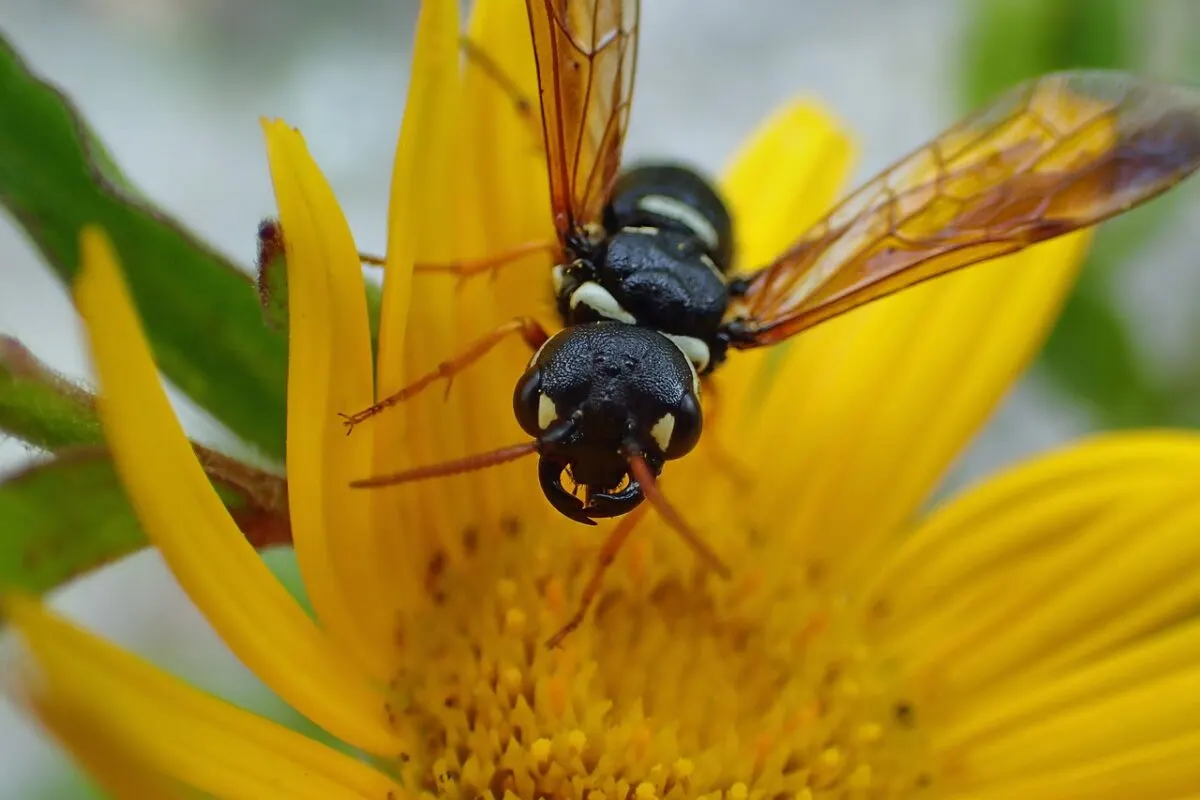In this post, we’ll be discussing the Black Wasp. All wasps are more or less terrifying due to their painful stings, but this species of wasp should also be noted for its beauty.
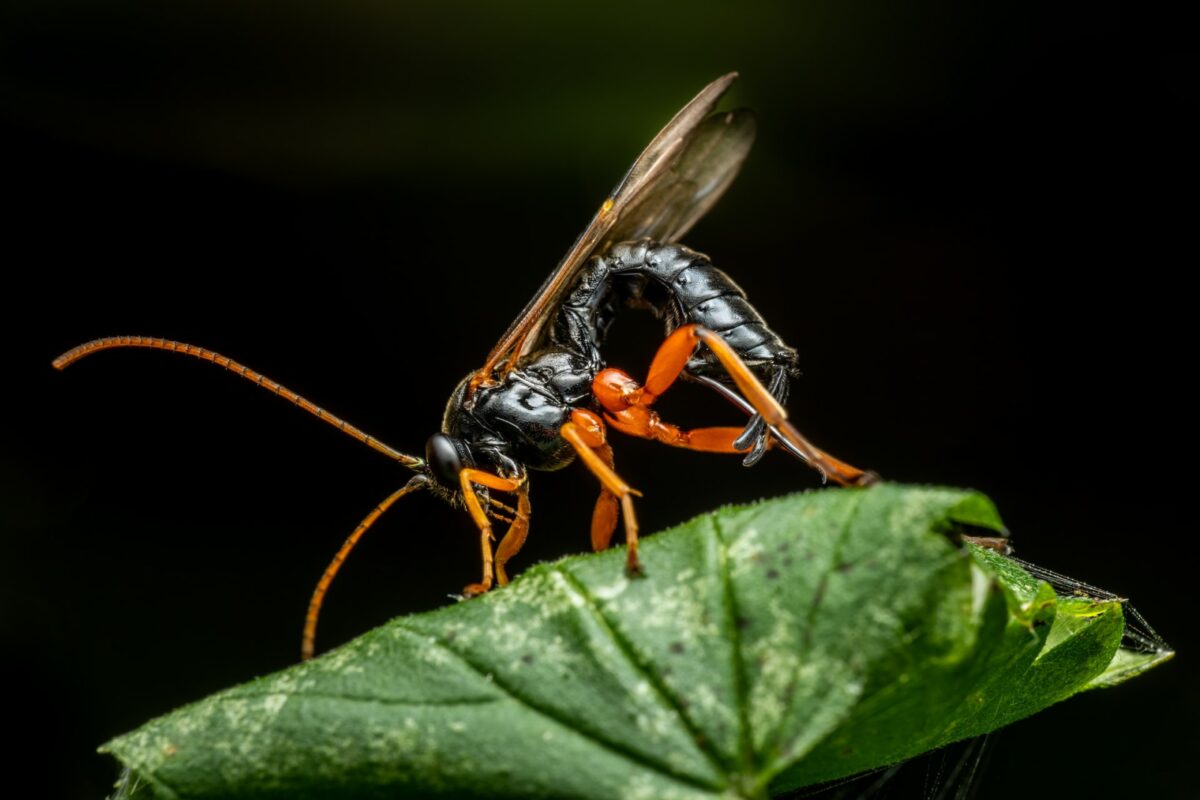
Nearly 600 million years have passed since humans and insects had their last joint evolutionary ancestor. However, we share multiple common habitats to date. It has been observed on many occasions that one causes difficulties for the other.
To better understand the reason for the existence of insects and their important contribution to the ecosystem, it is important to study all basic life functions of respective insects.
The following writing is a collection of facts and details from all possible aspects helping readers gain knowledge about the remarkable insect that goes by the name of black wasp.
What is a Black Wasp?
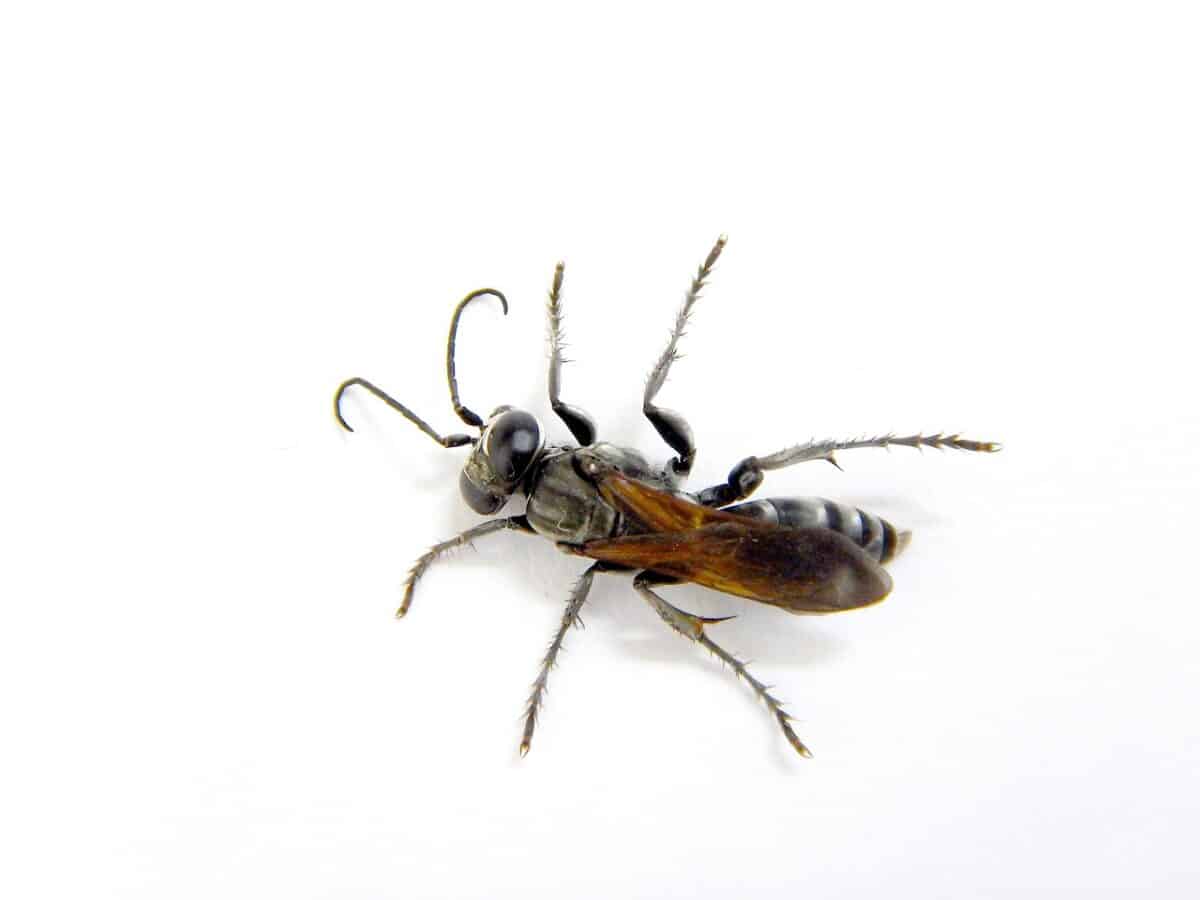
The great black wasp is an extremely big-sized species with opaque wings that are black in color and have a bluish shine to them. In scientific classification, it goes by the name of “Sphex pensylvanicus.” It is a kind of digger wasp and is commonly found busy drinking nectar and carrying pollen from flowers in the same process.
The most remarkable feature of these insects is their body, famous for its glowing black color with a matte look. They are elongated, especially slim between the thorax and abdomen parts of the body. When not in flight, their wings rest together along the length of the body towards the back.
The black wasps have legs that seem stretched and spiky, meaning they have fine thorns on them. The mandibles are the parts that compromise the wasp’s mouth, commonly fixed together. This structure is quite large and C-shaped, having an additional spike in the inner part of every curve.
It is a known fact that there are a lot of wasps existing in the world, and black wasps fall into the category of solitary wasps or serious wasps. It has gained this reputation only because they prefer living alone. Since they do not live in large colonies, it is also difficult for them to defend themselves. They exhibit maximum energy all through the day and then come back to their nests at sunset.
Females vs. Males
Both genders have bodies that measure about 1.5 inches long. Compared to the males, females black wasps are much bigger because they are the ones who transport the powerful and heavy stinger, as well as eggs. The female wasp is often spotted when looking through a neighbouring flower top.
The female wasps can sting, but then again, only when their nest is in danger. Great black wasps are subterranean wasps, which are creatures living below the ground and constructing tiny underground shells where they can look after and provide shelter to their offspring.
Different Names for the Black Wasp
The black wasps has many names, including the Great Black Wasp, Katydid Hunter, and Steel-blue Cricket Hunter. The latter two names are given to it because it notably hunts the katydids and steel blue crickets.
Even though their common name may sound scary, their name is only due to their size and not their aggressiveness. It is a known fact that male wasp adults do not have the capability to sting, and their sole purpose in nature is to mate with the female and reproduce.
Where are Black Wasps Commonly Found?
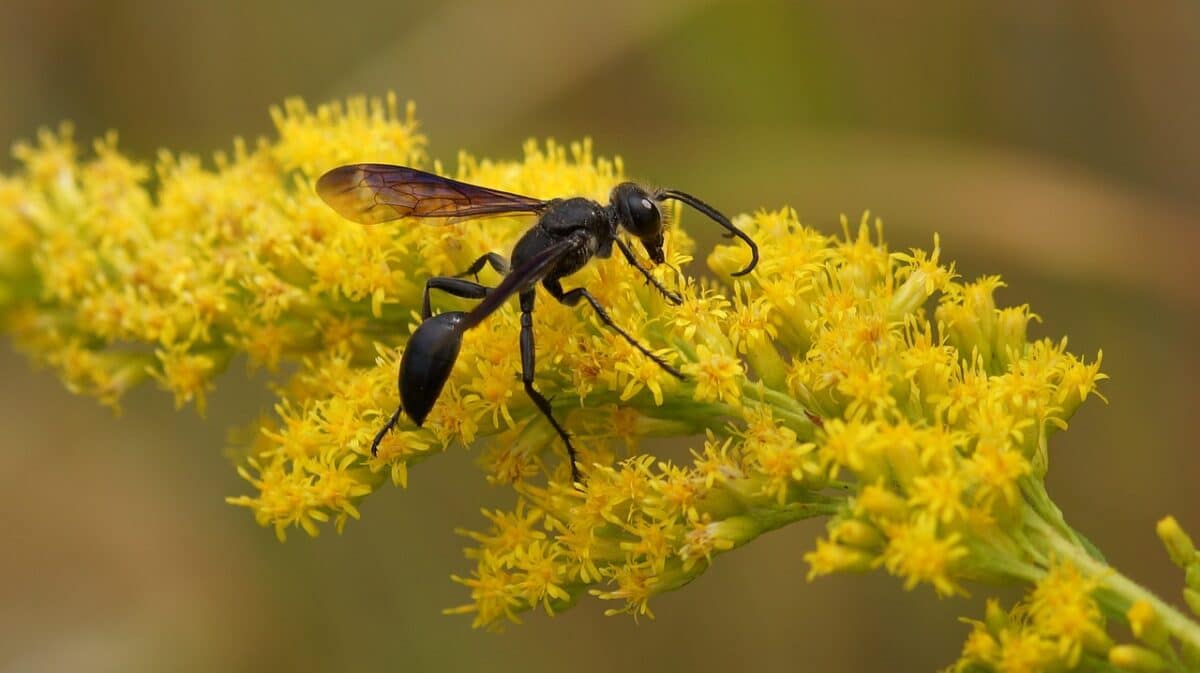
They most commonly inhabit the Eastern and the Western coast of the U.S., but are also to a certain extent, adapting to the weather farther north. On the other hand, the year-round warm climate of the western region of the United States helps the wasps to be full of life and energetic throughout the year.
Generally, the Great Black Wasps reside across most of the regions in the United States, except the Pacific Northwest. One can generally see them touring the flowered plants for the duration of summer, particularly during the months of July and August.
How do Biologists Classify Black Wasps Scientifically?
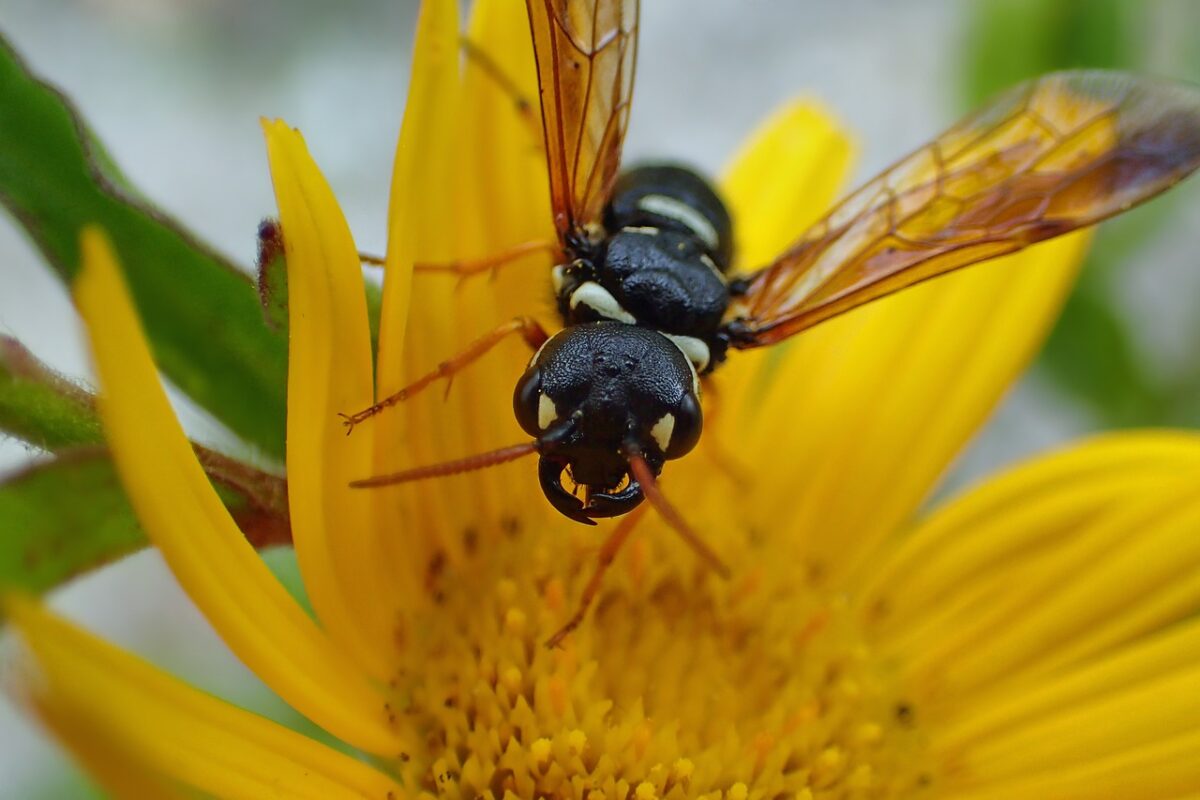
Black wasps are insects. If we want to understand insects, they are simply animals having six legs and a sectioned body divided into a head, thorax, and abdomen. They possess antennae and a hard outer skeleton.
There are more than thousands of known species of insects found all over the world. They generally differ in shape and size, but are divided into five groups, also called orders. Insects falling in a single order can have different appearances but share common characteristics.
If black wasps are to be understood through biological classification or grouping, then the following listing will help:
| Kingdom: | Animalia |
| Phylum: | Arthropoda |
| Subphylum: | Hexapoda |
| Class: | Insecta |
| Infraclass: | Neoptera |
| Subclass: | Pterygota |
| Order: | Hymenoptera |
| Suborder: | Apocrita |
| Superfamily: | Apoidea |
| Family: | Sphecidae |
| Tribe: | Sphecini |
| Genus: | Sphex |
| Subject: | Sphex pensylvanicus |
How Do Black Wasps Live?
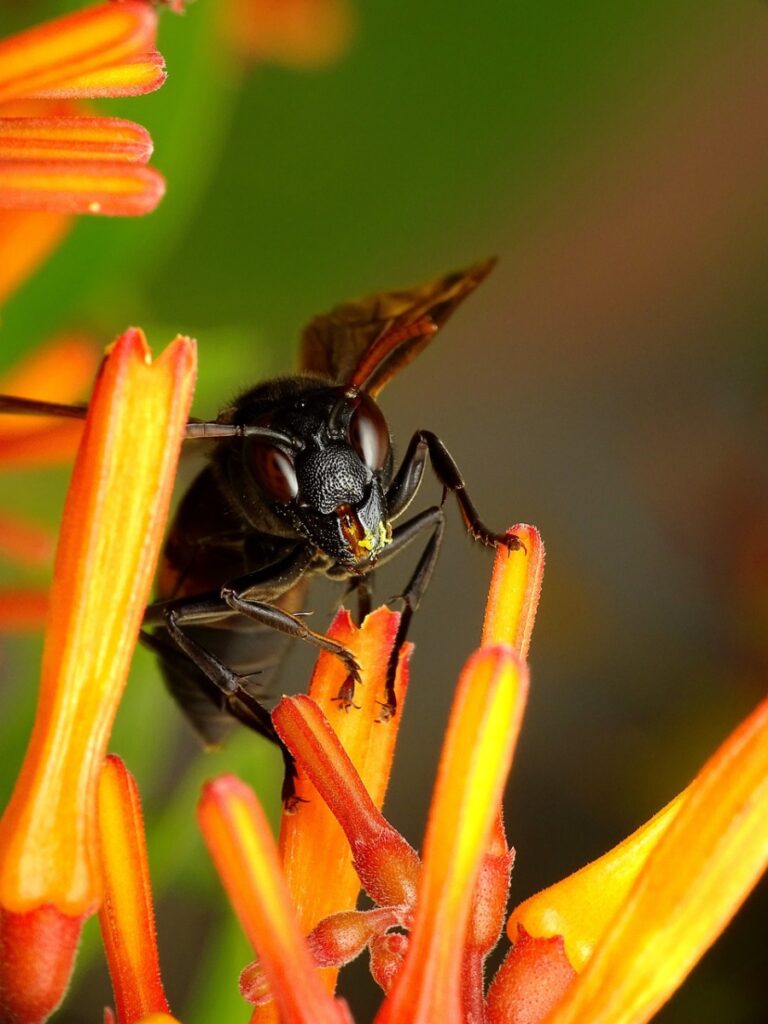
Every creature on this Earth has a shelter or home of one kind or another. Similarly, black wasps make nests. Contrary to yellow jackets or paper wasps, the great black wasp drills their nest in the ground.
They are generally solitary wasps who do not construct massive colonies like fellow species, even though their nests can have numerous larvae, and they’re capable of laying multiple eggs at a time.
Black wasps are very much like their close relatives, the Tarantula Hawk Wasp, in that they are parasitic and choose other insects as hosts for laying their eggs on. When observed, the Tarantula Hawk has a preference for large spiders as their hosts. On the other hand, the great black wasps will favor katydids and big grasshoppers.
The Interesting Mechanism of Black Wasps Laying Their Eggs
For most insects, their life starts from the stage of being laid as an egg. In order to start the circle of life, black wasps have an interesting process of stinging their prey three times. This will not kill the prey but will paralyze it to a great extent while still keeping it alive. After stinging the prey, the female wasp carries them back to their underground nest.
After the transport of prey is successful, the next step is laying their eggs on the stomach or the underside of the body of the prey. In the end, the eggs hatch and start to consume the katydid or grasshopper.
The prey chosen for the job comprises countless insects belonging to the Orthoptera order, namely crickets, katydids, and grasshoppers. It is kept alive for as long as possible while the larval wasps carry on feeding and, sooner or later, grow large enough to leave the nest.
The Interesting Life Cycle of Black Wasps
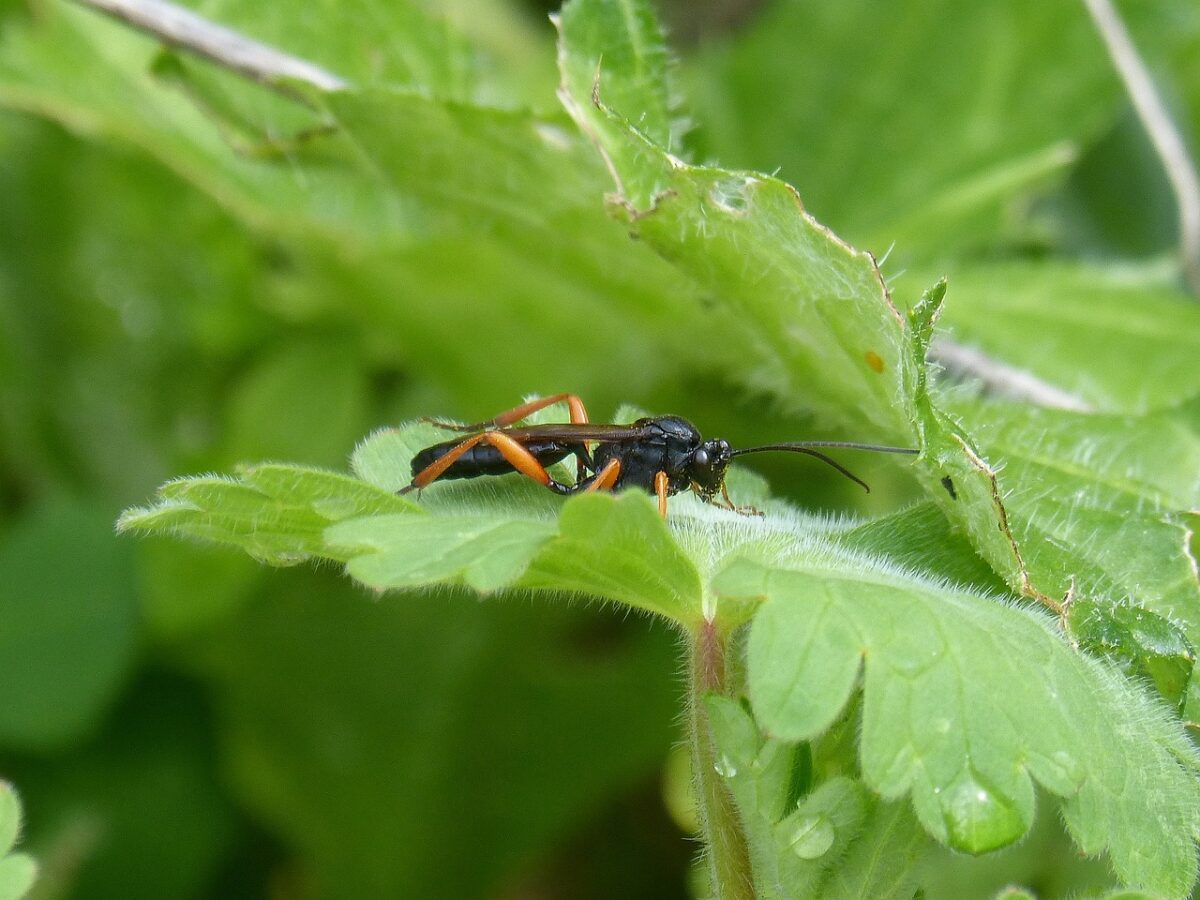
The females of the Great Black Wasp family construct their nests beneath the ground. As they are a solitary species and has no hive or sister workers, the females are responsible for digging about 12 inches below the soil and making a sequence of tunnels by means of their mouths and spiky legs.
Each cavity or compartment is allotted to an egg and a paralyzed insect to go with it. The moment larvae hatch, they already have a delicious meal to eat, immediately giving them nourishment to grow.
They progress into pupae by the end of fall and spend the winter in their tunnels until summer comes when prey and nectar are sufficiently available. Once adults, especially male wasps, leave the nest to mate, the newly mated females start the process of their own life by digging their own nests.
What do Black Wasps Feed on?
Wasps are omnivores as they consume numerous plant-based foods as well as different insects. Wasps go through different stages of development before becoming mature adults. Interestingly, with each different life stage, they generally eat specific foods for the duration of that stage.
As an undeveloped, grub-like larva, the wasp feeds on the paralyzed prey, usually katydids and grasshoppers, that their mother wasp provides it with.
Once the wasps reach the end of the developmental stage and become mature adults having wings, they love feeding on nectar and pollen from the flowers to get through their ultimate reproductive responsibilities.
The adult wasps also drink from flower nectar when hunting for prey and providing for their young ones.
Some Interesting Facts About Black Wasps
Some of the most remarkable facts about Black wasps include:
- When an offspring tunnel is sooner or later filled up with growing young, the female wasp seals off the chamber in order to safeguard the larvae from parasites or burgles approaching to take away her young’s food. In order to sort this issue out, the wasp will repeatedly use her head and shake her abdomen to compress and push down the soil. In some cases, the wasps might also use tiny tools, be it a stone or piece of a stick, to block the way.
- In the year 1749, a botanist named John Bartram described the Great Black Wasp. His description was recognized by the Royal Society of London as the first report of an insect from the New World. Carl Linnaeus labelled it taxonomically in the year 1763.
- More than 130 Black Wasp species have been identified in science.
- These insects also frequently go by the name of “digger wasps” as they dig into the ground while nesting.
- When the mother female black wasp stings and paralyzes the prey and carries it back to the nest, it also happens that on the way home, the prey is snatched by birds such as the house sparrow or the gray catbird.
- Note that the adult female does not fully kill her prey. She simply paralyses it and lays eggs on the bottom body part of the prey. The eggs are about 0,2-0,25 inches in length and 0,04 inches in width. Once the eggs hatch, they get their nutrition from the paralyzed prey.
Which Animals Eat Black Wasps?
Regardless of the fact that black wasps are established and famous for their poisonous stingers, they still fall prey to several species like insects, birds, mammals, amphibians, reptiles, and invertebrates.
It’s just a matter of bad luck (or poor evolution) that their bright color is very eye-catching, making them tempting to their predators.
How Do Black Wasps Harm Human Beings?
As we know that black wasps are solitary creatures by nature, it is a very unusual and rare to be stung by a black wasp. Black wasps have a bad reputation because of their stings, which may be incredibly painful. But even so, the great black wasp cannot really be considered dangerous.
The only serious situation that can arise is if anyone has an allergy (a medical reaction to something that does not suit a body)to insect stings.
So a great black wasp can be a great risk to people who are allergic to it. It can result in symptoms like shortness of breath, in which case you should seek medical attention immediately.
Generally speaking, the sting is fairly painful, but it is not as painful as the sting of the Tarantula Hawk Wasp or other species.
Either way, it’s best to stay away from the great black wasp and save oneself from the risk of being stung.
An infestation of black wasps is not common because of their nature of preferring privacy, but in some cases, it does happen. If so, then professional exterminators can help safely eradicate them.
How Do Black Wasps Benefit Human Beings?
The great black wasp also celebrated as a pollinator. It is one of the many insects that facilitate pollination by transferring pollen across flowers to carry out plant reproduction. Owing to this, they are highly beneficial, if not crucial, to the environment.
Some particular plant species are particularly assisted by pollination from the great black wasp. Also, the black wasp is known to pollinate plants belonging to milkweed, carrot, and bean families particularly.
As discussed earlier, black wasps prey on grasshoppers; hence they can be seen to help control the population of grasshoppers and katydids. A single female black wasp hunt an average of 16 grasshoppers per day, keeping their population much lower than it would’ve been otherwise.
This also saves the plants from the damage done by grasshoppers as they chew on crops and garden plants. Upon assessment, it is clear that the ecological or environmental role played by the great black wasps is greater than any other benefit provided by them.
They are known for their attractive size and glossy bluish-black wings, it is because of these physical features they are considered eye candy and a fascinating sight. They hold a notable presence in accounts written by famous people throughout history.
Key Points
| Black wasps are known to be lonely or solitary species with no hive or sister workers, the females are responsible for digging about 12 inches below the soil and making a sequence of tunnels by means of their mouths and spiky legs. |
| Wasps are known to be omnivores as they consume numerous plant-based foods and different insects. |
| A single female black wasp is known to hunt an average of 16 grasshoppers per day, assisting in the control of their population. |
| When an offspring tunnel is sooner or later filled up with growing young, the female wasp seals off the chamber in order to safeguard the larvae from parasites or burgles approaching to take away her young’s food. |
| The Great Black Wasps can be spotted across most of the regions in the United States, with the exception of the Pacific Northwest. |
| It is a known fact that male wasp adults do not have the capability to sting, and their simple purpose in nature is to mate with the female and reproduce. |
The Final Word
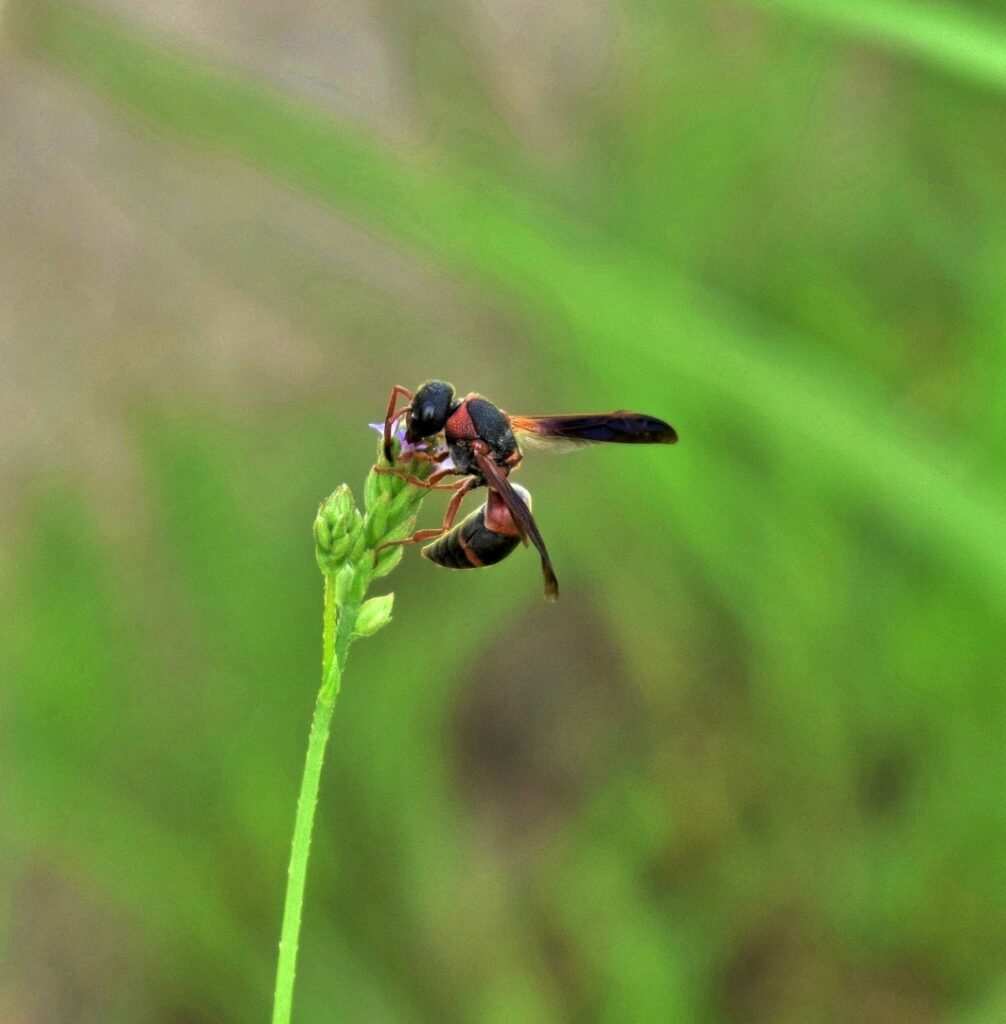
This journey of getting introduced to the great black wasp for the first time, till gaining in-depth knowledge about their various characteristics, has hopefully been very interesting and fruitful.
Without a doubt, it gives birth to curiosity to know that multiple behaviors exhibited by the black wasp are mainly because of its solitary nature. Additionally, they are blessed with a unique life cycle with particular importance given to the pre-birth stage, especially laying eggs and providing them with semi-dead prey to derive nourishment.
The key to learning the entire collection of detailed facts about the great black wasp is that it is not right to generalize an organism similar to its friends and class. Regardless of the fact that they can share a phylum or class with many other insects, black wasps have a distinct behavior.
In conclusion, it is important as well as thought-provoking to conduct in-depth studies about creatures, be it insects, birds, animals, and fish.
Thank you for reading this article! To learn even more about the terrifying stingers called wasps, read our post about the Wasp Nest.
Join our Forum for free today!


